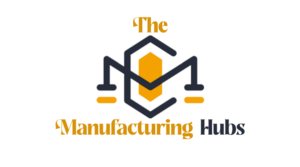The pursuit of energy efficiency has become a priority across various industries. Microchannel heat exchangers stand out as a pivotal technology in this quest, thanks to their compact design and enhanced thermal performance. By utilizing multiple small channels, these heat exchangers maximize the surface area for heat transfer, thus reducing the energy consumption associated with larger traditional models.
Understanding Microchannel Technology
Microchannel heat exchangers operate on the principle of increasing the heat exchange surface area while minimizing the volume and weight of the unit. This is achieved through the use of thin-walled channels that can effectively transfer heat without requiring bulky materials. As a result, they are not only lighter but also provide improved thermal efficiency.
In practical applications, such as in HVAC systems or refrigeration units, the ability to handle higher heat transfer rates can lead to significant reductions in energy demand. For instance, in commercial refrigeration, implementing microchannel technology can lower refrigerant charge and energy usage by as much as 30% compared to conventional designs.
Benefits of Microchannel Heat Exchangers
Enhanced Efficiency
Microchannel heat exchangers are engineered to optimize fluid dynamics, allowing for better heat transfer coefficients. This efficiency translates into lower energy costs, as systems can operate effectively at lower temperatures and pressures.
Reduced Refrigerant Charge
One of the standout advantages of microchannel designs is their ability to function with a reduced refrigerant charge. This not only results in cost savings related to refrigerant consumption but also aligns with environmental regulations aimed at reducing greenhouse gas emissions. The reduction in refrigerant volume is particularly beneficial in applications where weight and space are critical, such as in automotive air conditioning systems.
Compact Design
The compact nature of microchannel heat exchangers leads to space savings in system design. Their reduced footprint allows for more flexibility in installation, making them ideal for retrofitting existing systems without significant modifications.
Lower Maintenance Costs
Due to their robust construction and fewer components, microchannel heat exchangers often require less maintenance. Their efficiency in heat transfer reduces the burden on compressors and other system components, thereby extending their operational lifespan.
Real-World Applications
Microchannel technology is being widely adopted in various sectors, including automotive, industrial processes, and building climate control systems. In the automotive industry, for example, manufacturers are incorporating microchannel heat exchangers to improve the efficiency of vehicle air conditioning systems, resulting in better fuel economy. In industrial settings, these heat exchangers are being used in cooling towers and condensers to achieve significant energy savings.
Companies are increasingly recognizing the value provided by these systems. For further insights and options regarding microchannel heat exchangers, visit https://kaltra.com/microchannel-heat-exchangers to explore diverse applications and tailored solutions.
Future Prospects
As industries strive for sustainability and efficiency, microchannel heat exchangers are poised for further innovation and adoption. Research is ongoing to enhance their materials and design for even greater efficiency and performance. The continual development of nanotechnology and advanced materials will likely yield microchannel designs that can operate under more extreme conditions, paving the way for broader applications in energy-intensive industries.
Market Trends
The global shift towards eco-friendly technologies has prompted manufacturers to invest heavily in the development of microchannel solutions. The competitive landscape demonstrates a trend toward integrating smart technologies with heat exchangers to optimize performance dynamically, allowing for real-time monitoring and adjustments based on system demands.
Regulatory Frameworks
Government regulations focused on energy efficiency are likely to drive the adoption of microchannel heat exchangers. As stricter standards are set, industries that fail to adapt may face penalties, while those incorporating efficient technologies may benefit from incentives and tax breaks.
A Result
Microchannel heat exchangers present a significant opportunity for energy savings across a multitude of applications. Their combination of compactness, efficiency, and reduced maintenance renders them an attractive choice for businesses aiming to lower operational costs while contributing to environmental sustainability. As technology evolves, the integration of microchannel designs will undoubtedly be a critical component in the future of energy-efficient systems.

